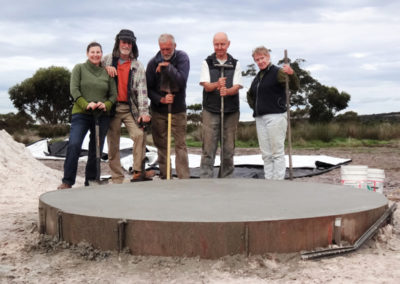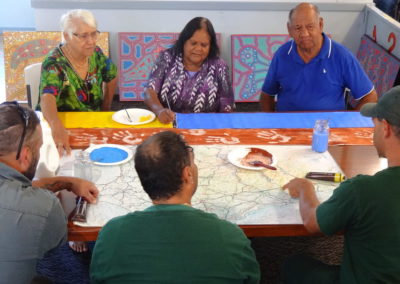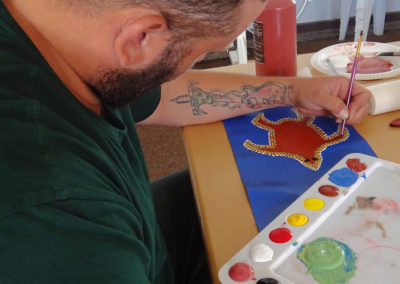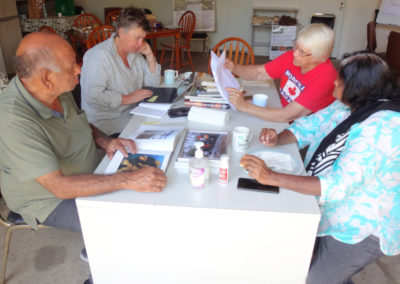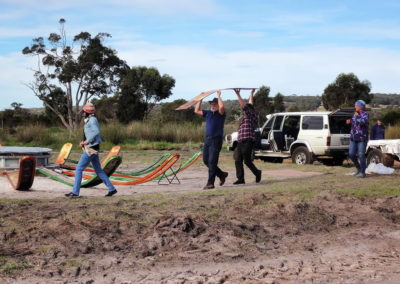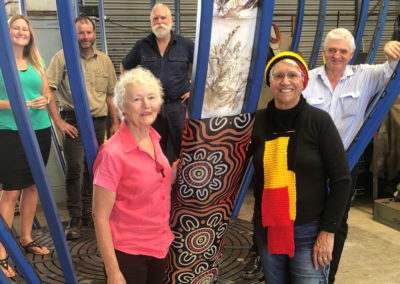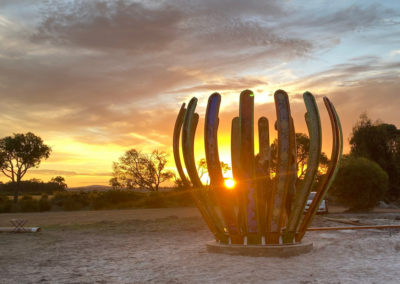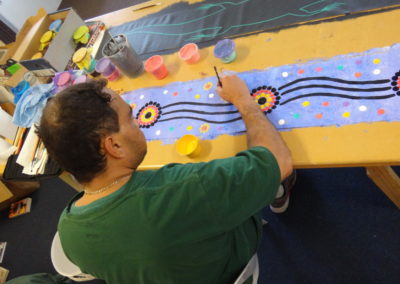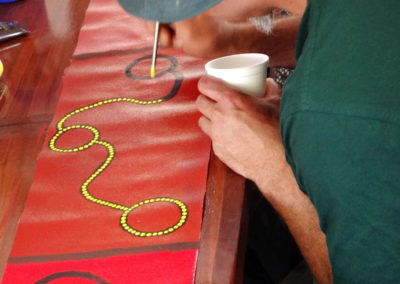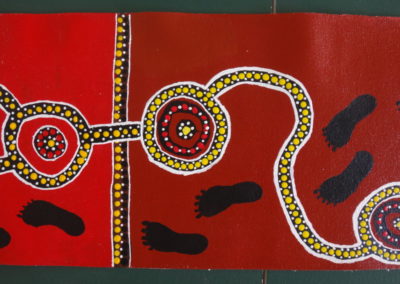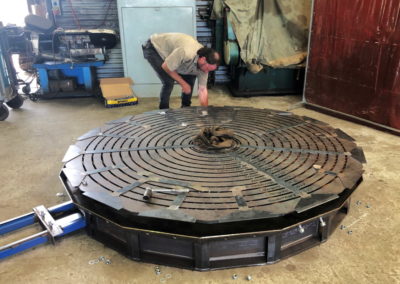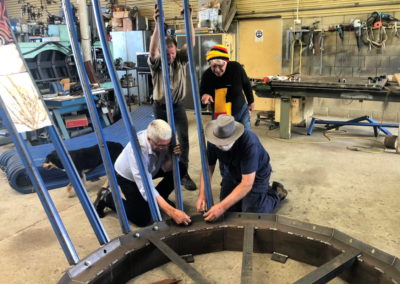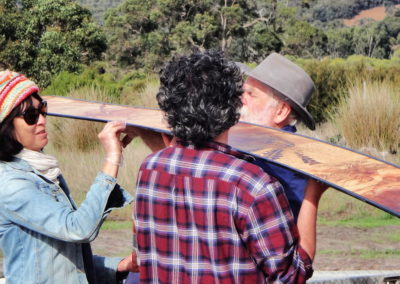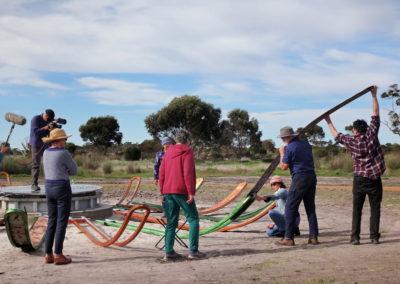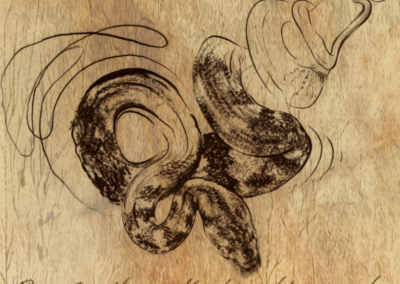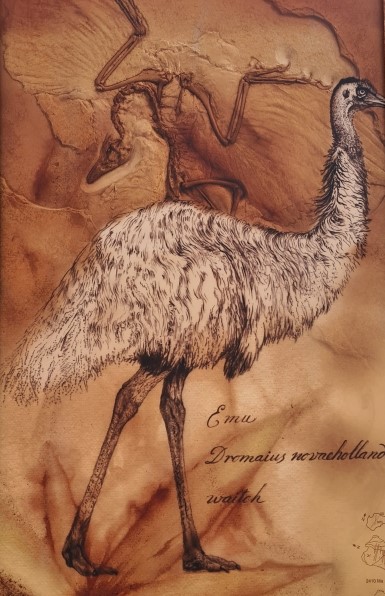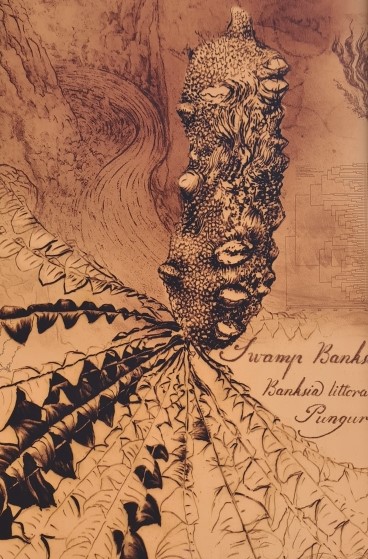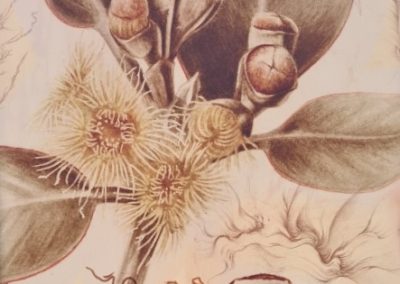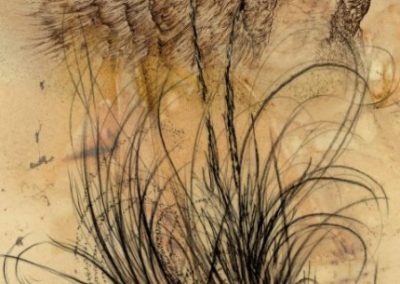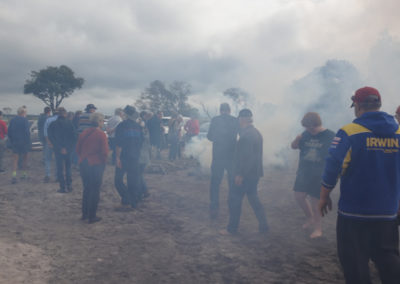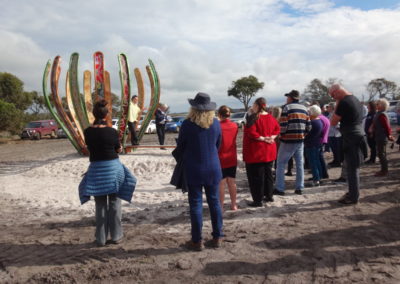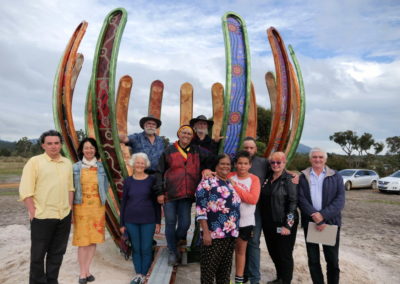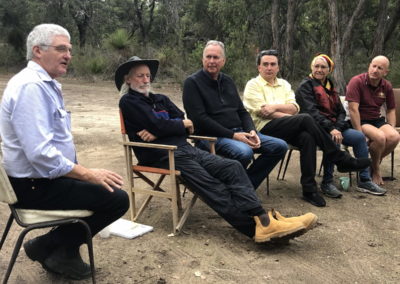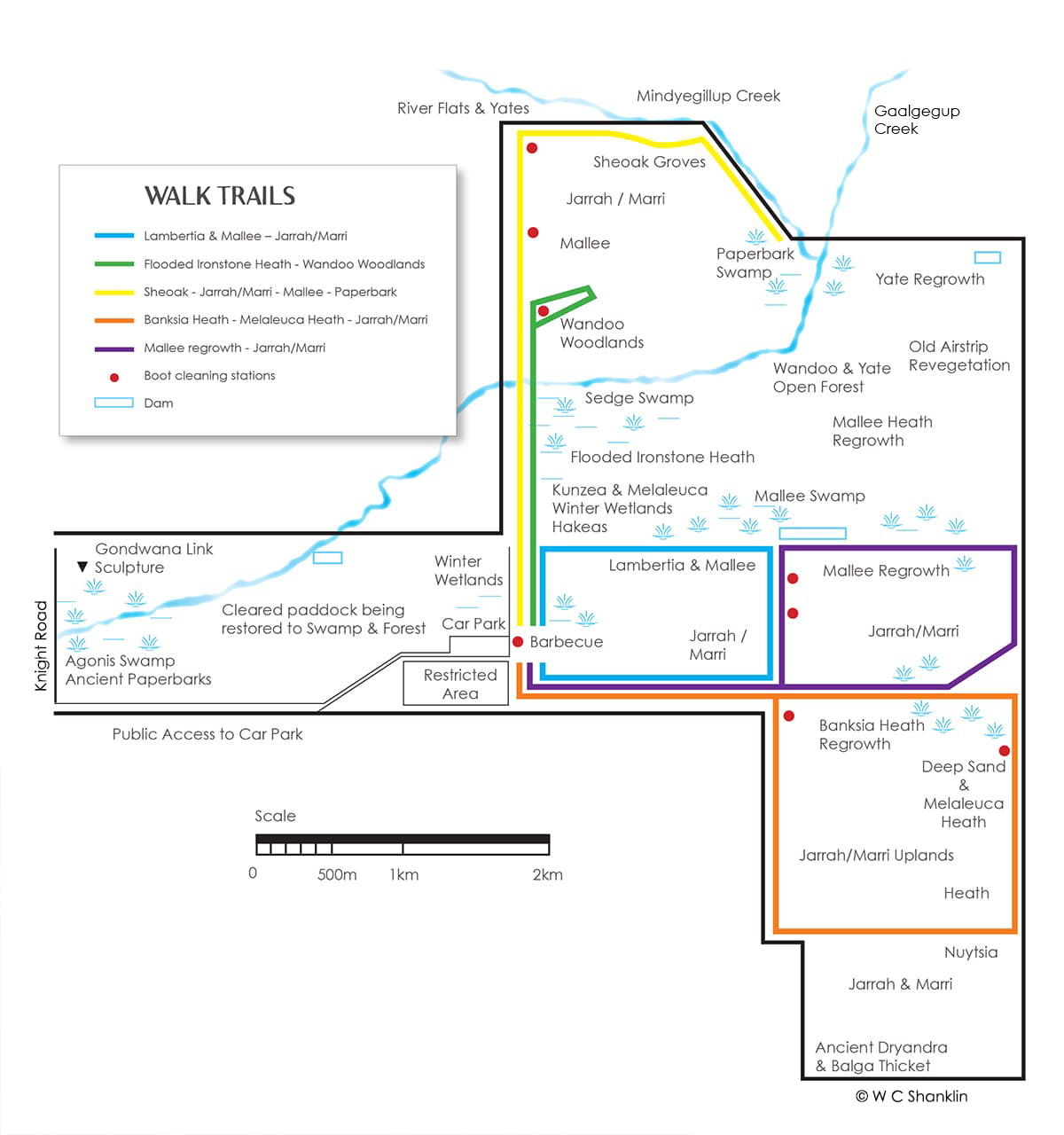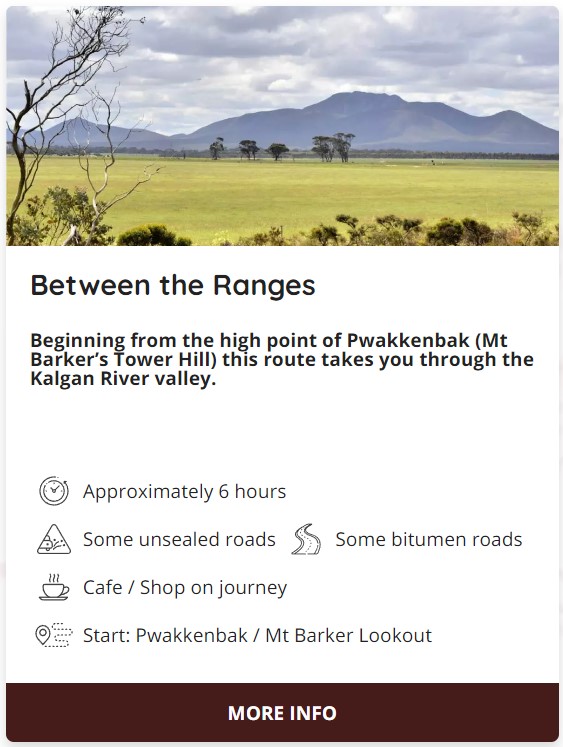-
Toilets Available
-
Picnic Areas
-
Hiking
-
BBQ Available
-
Mobile Reception (Telstra)
-
No Pets Allowed
Featured in journeys:

The Stars Descend | Porongurup to Ravensthorpe
Overview
This striking sculpture set against the backdrop of the Porongurup and Stirling Ranges is the result of an innovative collaboration between Indigenous and non-Indigenous artists and conservation groups.
The Twin Creeks sculpture is the first within a broader Genestreaming Sculpture Trail Program – a creative concept of Menang Elder Aunty Carol Pettersen and lead artist Ben Beeton. The project is developing similar sculptures throughout Australia to celebrate the importance of evolutionary processes, with ecological and cultural restoration working together.

The Twin Creeks sculpture unites traditional Noongar knowledge with Western science in a creative and interactive way. Resembling the bracts of local dryandra and banksia flowers, the sculpture traces the evolution over hundreds of millions of years of distinctive plant and animal species from the region.
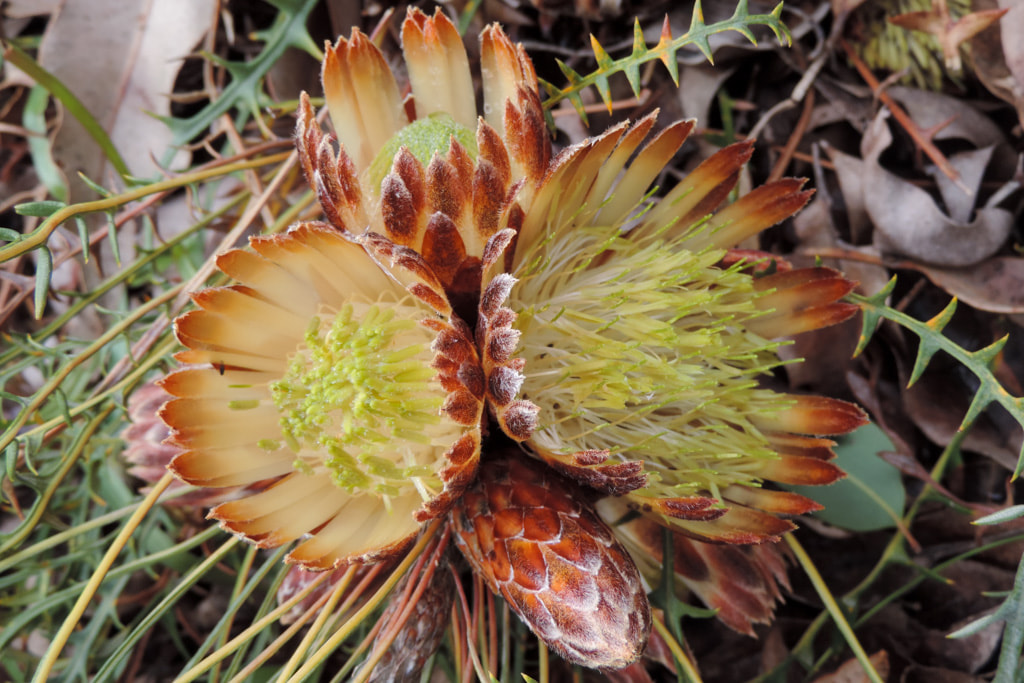
Dryandra ferruginea subsp ferruginea (syn Banksia rufa)
Image: Kevin Collins
From outside the structure visitors can contemplate cultural connections to country, with the Noongar artworks depicting stories of significant plants and wildlife.
By walking into the middle of the sculpture, visitors can embed themselves in the deep time story of the evolution of fifteen different local species through detailed illustrations on the standing arms of the sculpture.
The baseplate of the sculpture depicts a phylogenetic tree of each species’ evolution ‒ a visual illustration of shared ancestry of all species in the planetary Tree of Life, over the span of the geological timescale. Find out more in this short video by Gary Muir.

As lead artist Ben Beeton says, ‘When you enter this model, you are entering as a representative of the human species, in this special evolutionary tree.’
A team of local artists, craftspeople and community organisations were involved in bringing the sculpture into being, including the Friends of Porongurup Range, who own the Twin Creeks Conservation Reserve where the sculpture is located.
Story of the place
Noongar Boodja
Listen to Carol Pettersen describe the significance of this sculpture and the broader project:
Aunty Carol Pettersen hopes the sculptures will form a national tourism trail to increase awareness of the importance of ecological restoration, cultural restoration, and art. And also increased awareness of how, through deep time, all species are connected within the Tree of Life.
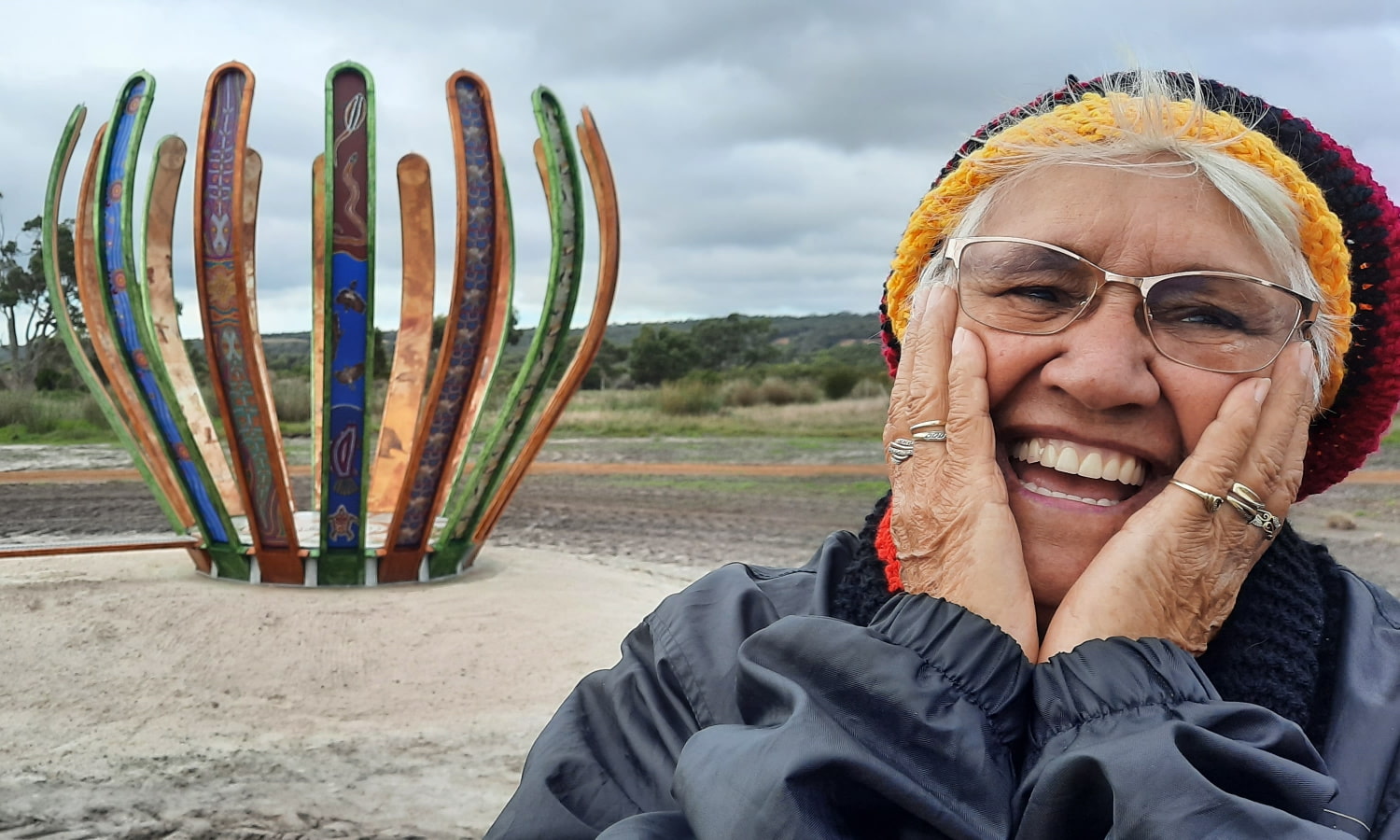
Menang Elder Carol Pettersen at the launch of the Gondwana Link sculpture
Image: Ben Beeton
Geological time
The geological timeline depicted in the sculpture baseplate begins with the ‘Cambrian explosion’ which occurred roughly 541 to 530 million years ago. This period was marked by the unparalleled emergence of organisms including many of the major phyla that make up modern animal life.
A remarkable amount of evolutionary development has happened since then. Vascular life has been evolving continuously in southwest Australia for about half the time that vascular life has been evolving on earth.
But it is worth noting that this is just a portion of the entire spectrum of geological time on earth, which started some 4.5 billion years ago. For a local comparison – the Porongurup Range is estimated to have been formed 1.2 billion years ago.
Read the Ancient Wonderland story for a more detailed dive into how this ancient history has created such a unique ecosystem.
The creative process
Carol Pettersen, local Menang Noongar Elder, assisted by Lucia Quearry from Friends of the Porongurup Range, invited Noongar artists from within the Shire of Plantagenet to participate in creating artworks for the outside of the sculpture.
With funding from Regional Arts WA and a partnership with Pardelup Prison, a series of workshops were held to develop the Noongar artworks. All images of the workshop from Lucia Quearry.

Elders Carol Pettersen (top right), Caroline Narkle (bottom right) and Frank Krakouer with Liz Jack
Image: Lucia Quearry
Noongar Elders and conservationists together chose 15 species to represent the region.
For the inside of the sculpture, field naturalist studies of the 15 selected species were created by scientific illustrator Mali Moir and Ben Beeton.
Further plant studies were provided by Jane Thompson.
Using natural dyes, regional plant impressions that represent how modern plant species may appear in the fossil record of the future were created by artist Jenny Wilson and Ben Beeton.

Eucalpytus flocktoniae
Image: Jane Thompson
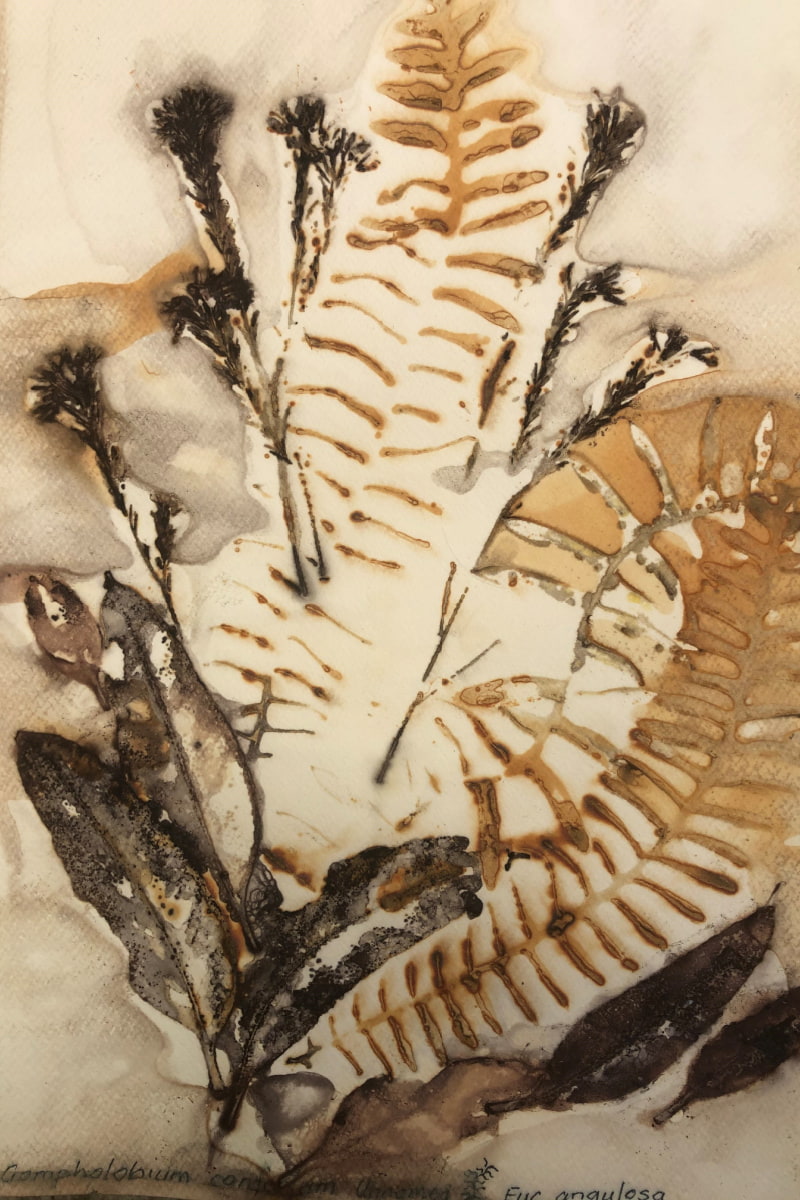
Natural dye impressions of local plants
Image: Jenny Wilson
The sculpture was crafted by local artist Mark Hewson in collaboration with Patrick Bocian of local steel manufacturers Bakers Junction Engineering. Further creative support was provided by Liz Jack. Volunteers from the Friends of Porongurup Range were a key part of the process from the preparation of the site to the installation of the sculpture itself.
The science behind the sculpture
The sculpture was designed by Ben Beeton following his work at the Australian National University on using virtual reality to visualise ecosystems through deep time.
Research for the common ancestry of selected regional species was undertaken by Gary Muir of WoW Wilderness Tours and Ben Beeton.
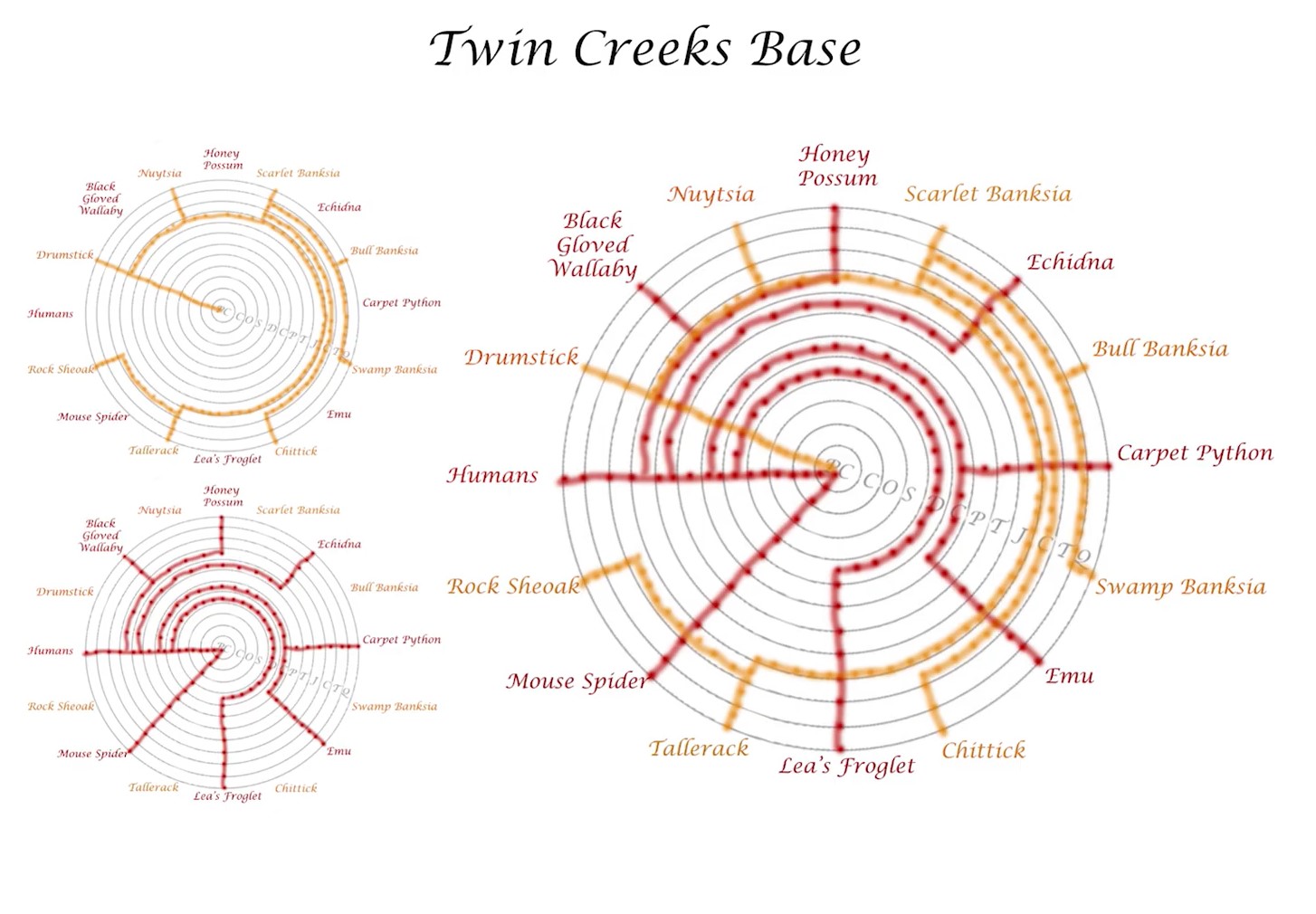
Hear Ben Beeton describe how the base plate of the sculpture represents the deep-time history of the evolution of these animal and plant species.
Celebrating the diversity
Eight animals were chosen: humans, honey possum, mouse spider, carpet python, black-gloved wallaby, echidna, frog and emu.
Launch of the sculpture
The sculpture was launched in May 2021, which included a smoking ceremony, a Welcome to Country by local elder Caroline Narkle, and a panel discussion with key people involved in its creation and Prof. Stephen Hopper.
Read some of the media coverage and watch the panel discussion at the SciArt website.
See & Do
Get up close with the sculpture
Admire the Noongar artworks on the outside of the sculpture and contemplate the cultural connections to country, and stories of significant plants and wildlife from the region.
Interact with the sculpture – walk into the middle of the sculpture and enter the deep time story of the ecology and geology of the region.
During 2022-23 the Friends of the Porongurup Range will develop interpretive panels and landscaping to complement the sculpture and enhance the storytelling. The first Banksias have been planted around the sculpture.

Image: Mali Moir
Visit Twin Creeks Conservation Reserve
Twin Creeks is a privately owned conservation reserve – purchased and managed by the Friends of the Porongurup Range.
This is a passionate group of people making a real difference to nature conservation in their local area, and beyond. Twin Creeks Conservation Reserve is a crucial part of Ranges Link – a combined community effort with the Oyster Harbour Catchment Group to reconnect remaining habitats between the Stirling Range and Porongurup Range national parks, which in turn is part of the even larger scale Gondwana Link effort.
Explore the Porongurup Ranges
Follow the road less travelled in the Porongurup Ranges area and follow our Heartland Journeys trail Between the Ranges.
Get Involved
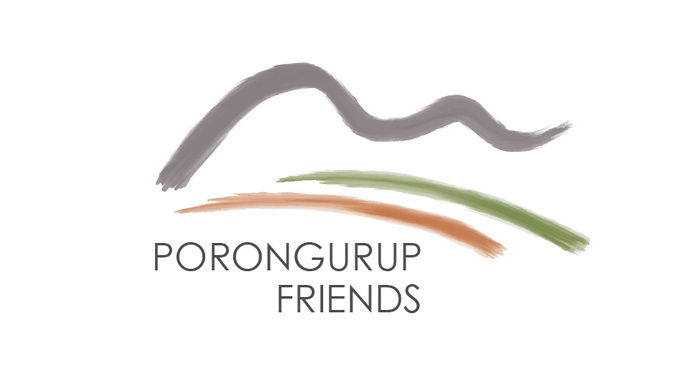
JOIN the Friends of Porongurup Range
DONATE to support their crucial work
FOLLOW on Facebook
SHARE the story of Twin Creeks Conservation Reserve and Friends of Porongurup Range with friends and family
Nearby
There are many other sites to visit nearby including:

Twin Creeks Conservation Reserve
Nestled between the Porongurups and Stirling Ranges, Twin Creeks is a community owned conservation reserve - purchased and managed by the Friends of the Porongurup Range.

The Stars Descend | Borongur | Friday 23 March 2023
Chapter 3 (Borongur) of The Stars Descend at Twin Creeks Conservation Reserve, Porongurup Range

Castle Rock and Walitj Meil trail
The Castle Rock Granite Skywalk and ground level Walitj Meil walk trail are in the Porongurup National Park.

Woogenellup Rd - North
This scenic drive option takes you off the bitumen onto a good quality gravel road that takes you up close to the southern side of the Stirling Ranges.

Porongurup Road
Porongurup Rd takes you to the base of the spectacular and ancient Porongurup Range, which is mostly protected in a National Park, also with beautiful views of the Stirling Range.
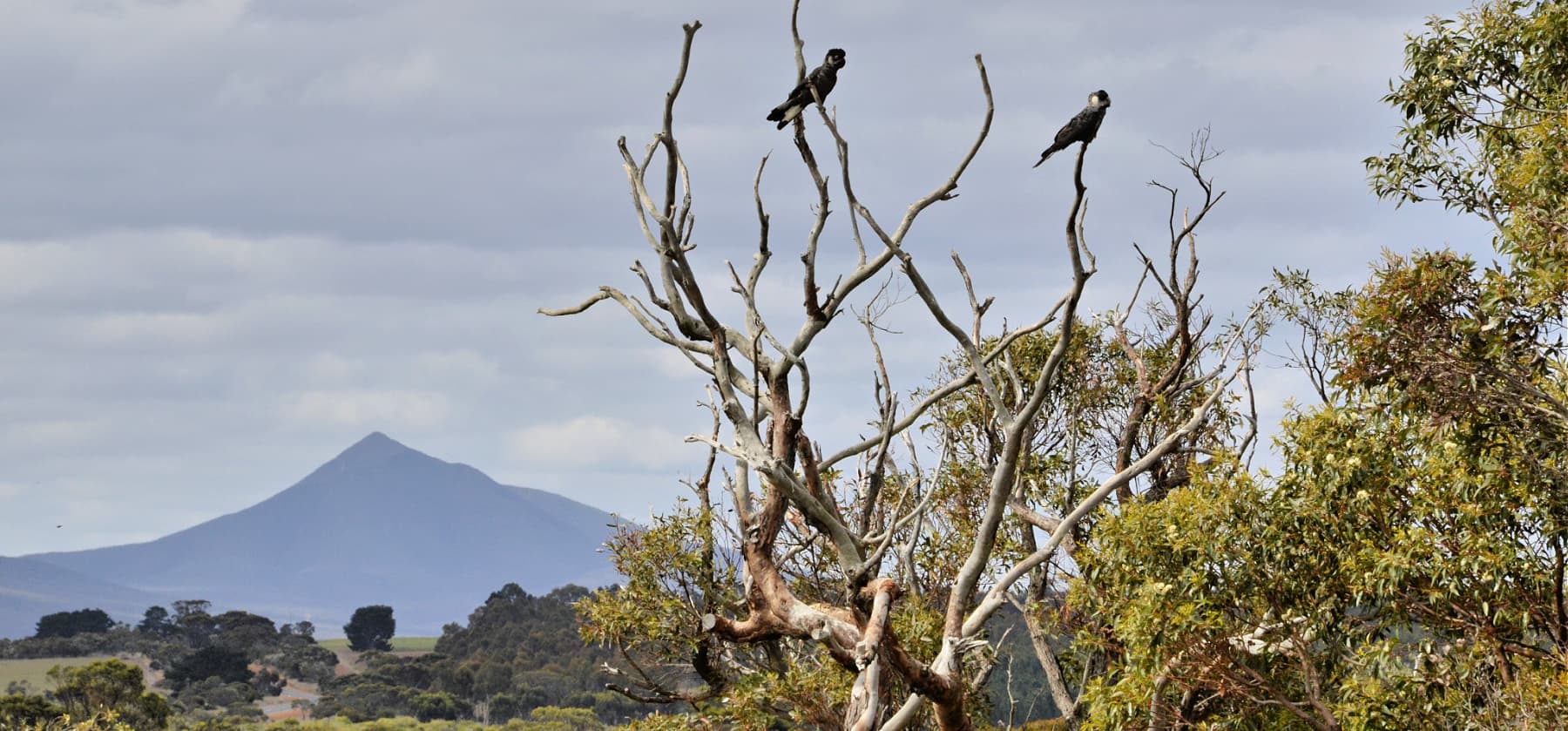
Chester Pass Rd viewpoint
This is just a small gravel roadside stop with views of Koi-Kyenuruff (Stirling Ranges) and across farmland.
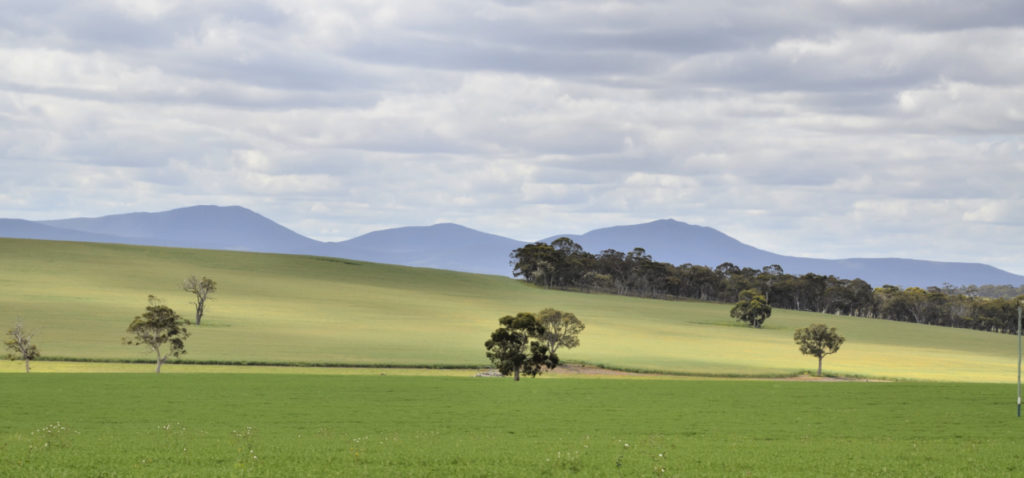
Woogenellup Road
This drive from Pwakkenbak and Mt Barker takes you out into some very scenic farm land, with the Stirling Ranges as your ever-present backdrop.

Pwakkenbak / Mt Barker Lookout
At 404m above sea level, this lookout provides a commanding view over the entire region, including both the Stirling and Porongurup mountain ranges.
Practical Information
Directions
Twin Creeks Community Conservation Reserve is at 326 Knight Road – about a 7 minute drive from the Porongurup Shop and Tearooms, which is on Porongurup Road. The sculpture is in the north-west corner of the reserve, about 500 metres north of the main gate.
From the intersection with Porongurup Rd, drive about 4 km along Knight Rd and you’ll see the sculpture from the road, on the right-hand side. Enter through the gate that’s signposted ‘Gondwana Link Sculpture’ and follow the directional signage.
Facilities
There are no facilities at the sculpture site, but nearby, also on the Twin Creeks Conservation Reserve, you will find:

- Toilets (long drop) with handwashing facilities are available and are wheelchair accessible.
- Rainwater tank near the BBQ that has untreated rainwater – use it at your own risk.
- A free gas BBQ is available on-site, with an undercover picnic table/area – please clean it after use and take all rubbish with you.
- Rubbish bins are not provided at Twin Creeks – please take all rubbish with you.
- Parking and turning area for large vehicles/caravans.
- Telstra Mobile phone reception is available at Twin Creeks.
- There is an information shelter with brochures and maps.
- 5 Walk trails – easy to moderate, mostly flat/undulating, some accessible by wheelchair or prams.
Conditions of Entry
- Out of respect for the native fauna, dogs are not allowed.
- Camping is not permitted.
- No fires
- Bikes are not permitted at Twin Creeks because of the risk of spreading dieback/phytophthora into sensitive areas.
Dieback safety
Dieback (Phytophthora) is a risk to many plants in this reserve, so please clean your boots and walking poles before you arrive, and again at any signed boot cleaning stations within the reserve.
Opening times
The entrance gate will usually be closed but not locked – you are welcome to come in, but please close it behind you whenever you come in or go.
For safety reasons Twin Creeks will be closed to the public on total fire ban days, or days of extreme weather. On these days, the gate will be locked and no entry is permitted – please respect this.
Where to eat and stay
See the suggestions from our friends at Great Southern Treasures:
Visitor Information

Porongurup Store
On Porongurup Rd, this is a great source of local information with great food and afternoon teas.
(08) 9853 1110

